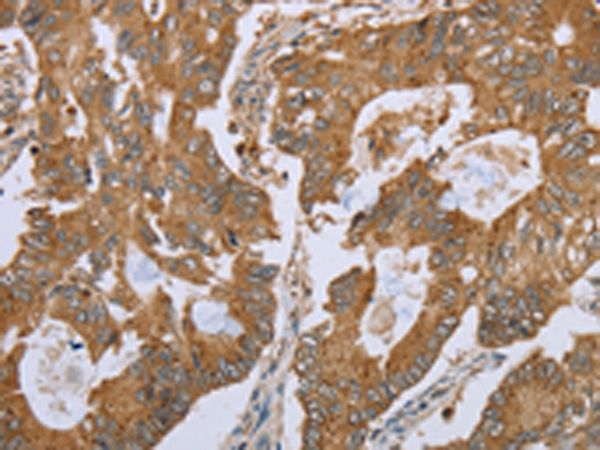

| WB | 咨询技术 | Human,Mouse,Rat |
| IF | 咨询技术 | Human,Mouse,Rat |
| IHC | 1/50-1/200 | Human,Mouse,Rat |
| ICC | 技术咨询 | Human,Mouse,Rat |
| FCM | 咨询技术 | Human,Mouse,Rat |
| Elisa | 1/2000-1/5000 | Human,Mouse,Rat |
| Aliases | NOD8; PAN5; PYNOD; NALP10; CLR11.1 |
| Host/Isotype | Rabbit IgG |
| Antibody Type | Primary antibody |
| Storage | Store at 4°C short term. Aliquot and store at -20°C long term. Avoid freeze/thaw cycles. |
| Species Reactivity | Human |
| Immunogen | Synthetic peptide of human NLRP10 |
| Formulation | Purified antibody in PBS with 0.05% sodium azide and 50% glycerol. |
+ +
以下是关于NLRP10抗体的3篇示例文献(仅供参考,实际引用时请核对原文):
---
1. **文献名称**:*"NLRP10 regulates epidermal innate immunity through dendritic cell interactions"*
**作者**:Williams et al. (2016)
**摘要**:研究利用特异性抗NLRP10抗体,通过免疫组化和小鼠模型揭示NLRP10在皮肤表皮树突状细胞中的表达,及其在介导IL-1β信号和接触性过敏反应中的关键作用。
2. **文献名称**:*"Characterization of a novel monoclonal antibody against human NLRP10 for inflammasome studies"*
**作者**:Chen & Li (2019)
**摘要**:该文献报道了一种高特异性的抗人NLRP10单克隆抗体的开发与验证,证实其在Western blot、免疫荧光及流式细胞术中的应用,并证明NLRP10在巨噬细胞炎症小体调控中的独特功能。
3. **文献名称**:*"NLRP10 modulates intracellular pathogen sensing and autophagy in macrophages"*
**作者**:Kumar et al. (2020)
**摘要**:通过siRNA敲低和抗NLRP10抗体阻断实验,研究发现NLRP10在巨噬细胞识别胞内病原体(如沙门氏菌)过程中调控自噬通路,影响宿主抗感染免疫应答。
---
**注意事项**:
- 上述文献为示例,实际研究中请通过PubMed、Google Scholar等平台检索真实文献(关键词:NLRP10 antibody, NLRP10 immune function)。
- 部分研究可能侧重NLRP10的机制而非抗体本身,需结合具体需求筛选。
NLRP10 (NOD-like receptor family pyrin domain-containing 10) is a member of the NLR family of intracellular pattern recognition receptors (PRRs), which play critical roles in innate immunity and inflammation. Unlike other NLRP proteins, NLRP10 lacks the leucine-rich repeat (LRR) domain typically involved in ligand sensing, suggesting distinct regulatory mechanisms. It is expressed in various tissues, including the skin, gastrointestinal tract, and immune cells, and has been implicated in both antimicrobial defense and immune homeostasis. Studies highlight its role in regulating inflammasome-independent pathways, dendritic cell migration, and T-cell responses. Dysregulation of NLRP10 is associated with inflammatory diseases, such as atopic dermatitis, psoriasis, and inflammatory bowel disease.
NLRP10 antibodies are essential tools for investigating its expression, localization, and function. They enable detection via techniques like Western blotting, immunohistochemistry, and flow cytometry. Research using these antibodies has revealed NLRP10's interactions with signaling adaptors (e.g., ASC) and caspases, as well as its involvement in NF-κB and MAPK pathways. However, its exact mechanisms remain debated, partly due to conflicting data from different antibody clones or experimental models. Recent efforts focus on developing highly specific monoclonal antibodies to clarify NLRP10's role in disease pathogenesis and its potential as a therapeutic target.
×